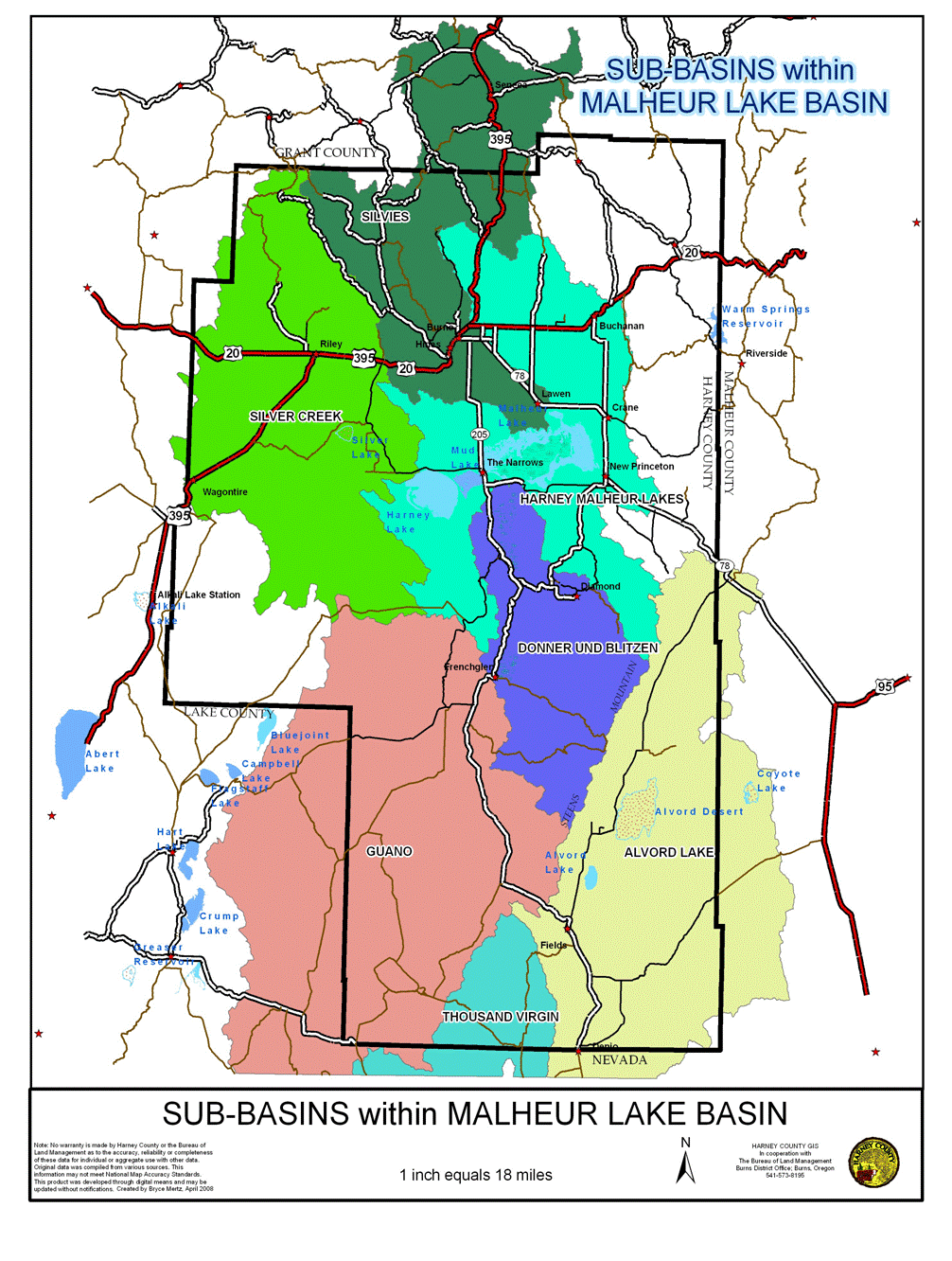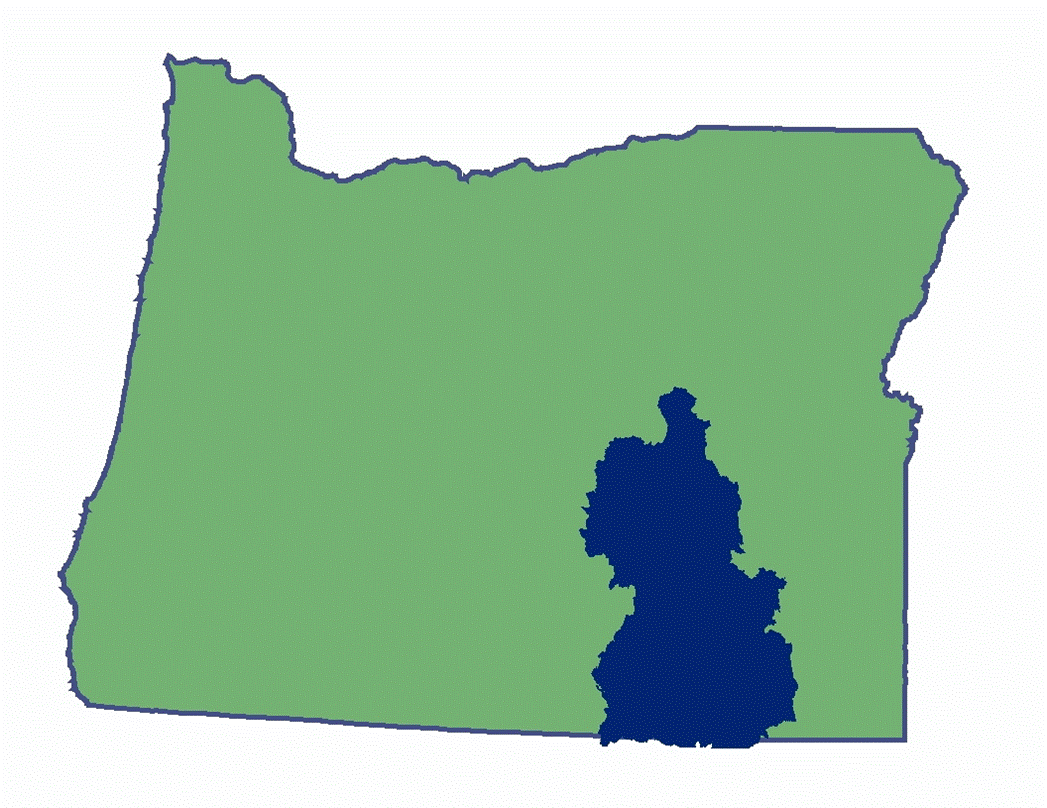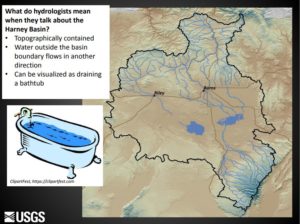The Harney-Malheur Lakes Basin watershed covers a little over 6 million acres in the southeast portion of Oregon. It is made up of several closed basins, with none of our waters finding their way to the Pacific Ocean, and thus we do not have any migrating anadromous fish species. The basin is home to Lahontan Cutthroat and Red Band Trout.
The average elevation for the basin is 4200′ with the highest point being the top of Steens Mountain, which is 9780′. While most of the basin is arid high desert uplands, approximately 600,000 acres of the northern portion is forested. Given our elevation and the common occurrence of frost at any time during the short growing season, cattle and hay are the main commodities grown in the basin.
The Basin is home to abundant herds of mule deer, elk and antelope. Wild horse herds are managed by the BLM. Approximately 7300 residents live with in the basin. Most of the basin is utilized for agriculture, with 73% of the lands being administered by Federal and State Agencies. The US Fish and Wildlife Service manages the 187,000 acre Malheur National Wildlife Refuge at the base of Steens Mountain, which is visited each year by approximately 60,000 tourists.
Assessments for the seven sub-basins were completed.
Silvies Sub-basin Assessment HCWC
SilverCreekSubbasin Assessment HCWC

